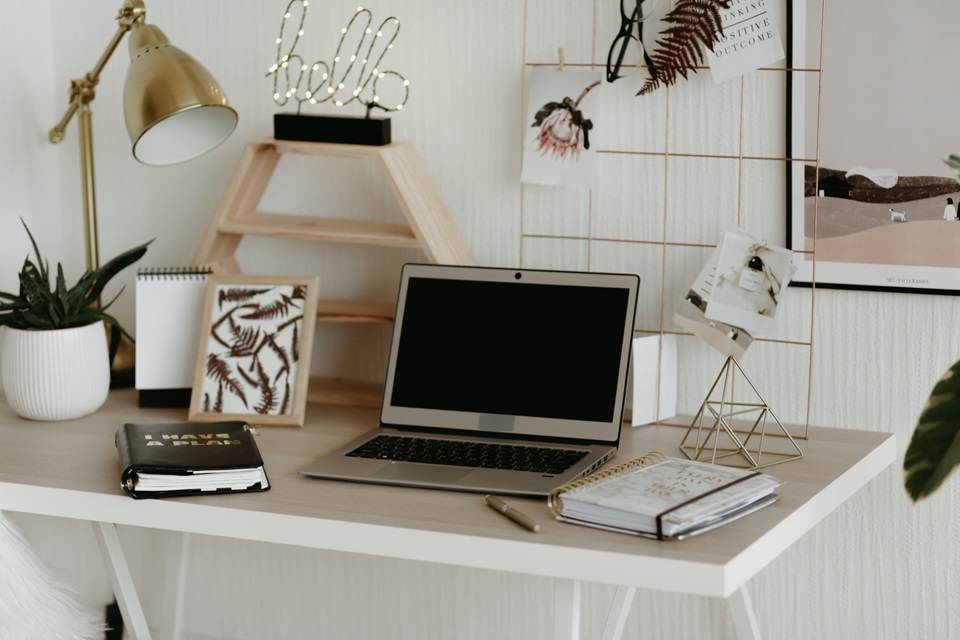Many of us are finding ourselves working from the convenience of our homes as the lines separating work and home life continue to blur. This article will look at five essential organizing strategies for your home office, including how to define your workspace, declutter, buy storage, put ergonomics and comfort first, and arrange your digital files. By using these techniques, you may design a workstation that encourages creativity and productivity while still reflecting your taste.
Table of Contents
1. Define Your Workspace
It’s important to identify your workplace before starting the process of arranging your home office. Pick a certain room in your house to use as your workplace. This should ideally be a private, cozy location that is isolated from your living spaces. Setting boundaries to separate work and personal life with a designated workstation is helpful. If you don’t have a second room, think about using a wall or a room’s corner to separate your workspace. This mental division not only aids in your mental shift into job mode but also lessens distractions, enhancing your ability to focus.
2. Declutter & Simplify
Decluttering is the first step in arranging your home office. Remove extraneous objects, outdated documents, and unused office supplies. If you’re going to decorate your office, keep it simple. Only keep what is necessary; store or discard everything else. A clutter-free setting encourages attention and helps to lessen distractions. It’s simpler to focus on your job when your workplace is open, and you can only see what’s essential, which promotes a more efficient and stress-free environment. This method of decluttering your area can also improve your mental clarity since a neat workstation can encourage a neater, more orderly cognitive process. Consider using a laptop docking station to simplify cable management and optimize your workspace further.
3. Invest In Storage Solutions
Having efficient storage options is essential for keeping a home office tidy. To keep your workstation organized, think about investing in shelves, cabinets, and drawers. The best way to maximize vertical space and keep things close at hand is with wall-mounted shelves: sort and store documents, office materials, and gadget accessories using storage bins and organizers. Finding what you need is made simple by labeling containers for keeping things. The benefit of well-organized shelving is that it not only keeps your area free of clutter but also makes it easier for you to find things fast, cutting down on the amount of time you must spend looking for things and enhancing efficiency.
4. Ergonomics & Comfort
Your workplace should be cozy and ergonomic. To lower your risk of back discomfort, invest in an ergonomic chair with sufficient lumbar support. To avoid neck and wrist pain, make sure your workstation is at the proper height. Use monitor stands to raise the monitors to eye level, which will relieve neck discomfort. It’s also essential to have good lighting. Make sure your office is well-lit with task lighting, and think about adding some plants for a touch of the outdoors and better air quality. In addition to improving your physical health, ergonomics and comfort also increase productivity and general job satisfaction. You’ll discover that a relaxing and well-planned office motivates you to work harder and more productively.
5. Digital Organization
Just as harmful as physical clutter is digital clutter. Put your emails and computer files into folders with descriptive labeling. Keep your desktop organized by regularly removing unused files and shortcuts. To avoid data loss, backup crucial files to an external device or a service that stores data in the cloud. To keep track of activities and deadlines, make an investment in electronic devices like management of projects software or to-do list applications. An ordered digital workstation boosts output and effectiveness. By controlling digital clutter, you can quickly locate crucial papers and avoid the stress of navigating a disorganized digital environment. Your digital workplace is essential for streamlining your workflow and shows your organizational abilities.
Conclusion
In conclusion, productivity, concentration, and general well-being all benefit from a well-organized home office. You can make your home office a productive and welcoming place where you are able to flourish in your work while maintaining an equilibrium between your personal and professional lives by following the above-mentioned advice. An organized home office is your haven for achievement and creativity, not just a practical area.



